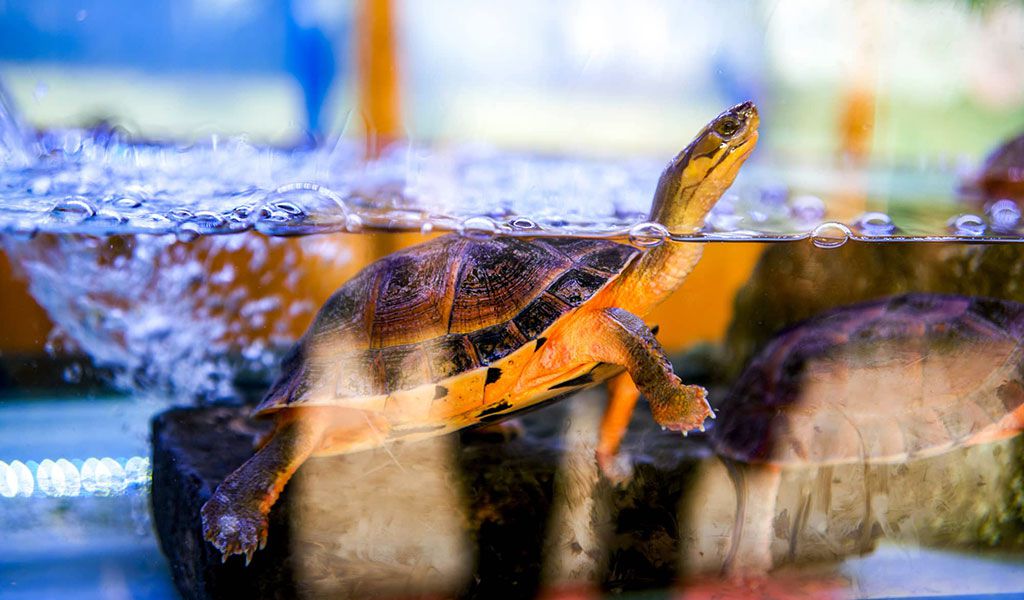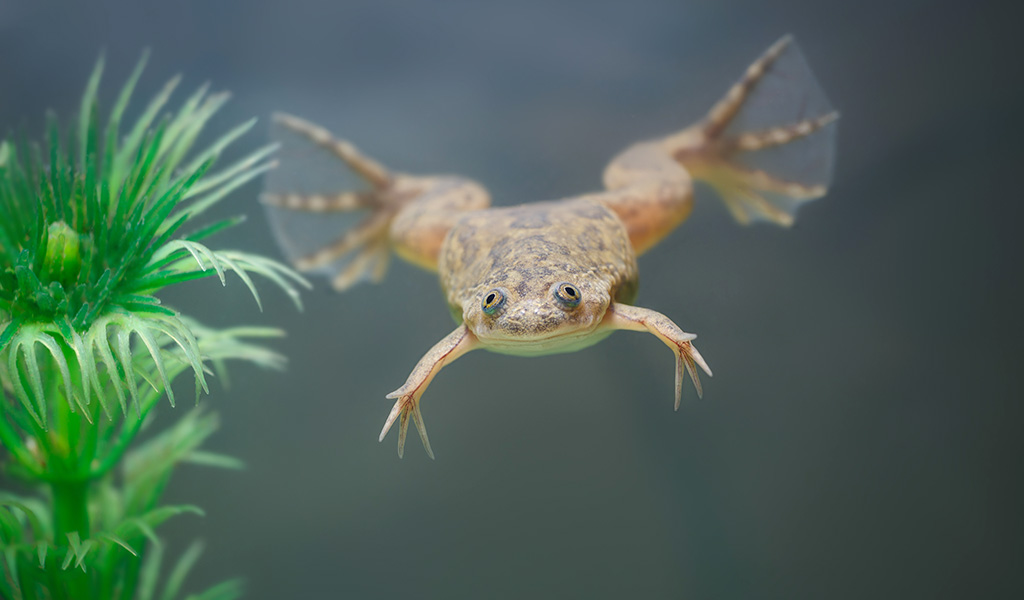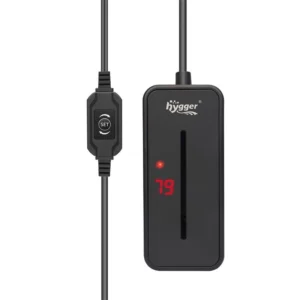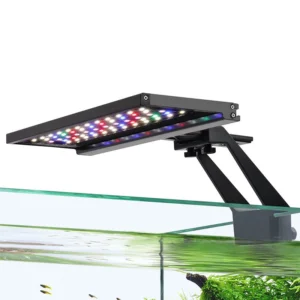Exactly, in addition to fish and aquatic plants, you can also keep some amphibians in a tank. For example, axolotls. If you know little about amphibians in aquariums, take it easy, we will describe amphibians in this article. Do you feel thrilled to go for it? Let’s delve right in.
Content Table
What is an Amphibian?
Amphibian & Reptile
Amphibians described in the Oxford Dictionary refer to any animal that can live both on land and in water. They have cold blood and skin without scales, like frogs and axolotls. On the contrary, reptiles are cold-blooded animals and have skin covered in scales, such as tortoises, snakes, and crocodiles. Commonly, amphibians possess moist and smooth skin, while reptiles’ skins are dry.
Get into amphibians
As amphibians are cold-blooded animals, their body temperature will change with the temp of surrounding air or water. When they live on land, they breathe with their lungs. While they live in water, they breathe with gills. Generally, amphibians come in three groups – frogs and toads, salamanders and newts, plus wormlike caecilians.
Popular pet amphibians in home aquariums
Furthermore, amphibians consume worms, insects, and other smaller prey. Next, we will list some popular amphibians that can be kept at home aquariums.
| African Dwarf Frog | Tomato Frog | Axolotl |
| Pacman Frog | Red-Eyed Tree Frog | Spotted Salamander |
| Surinam toad | Paddle-Tail Newt | Fire Belly Newt |
Is a Turtle an Amphibian
Turtles are reptiles, rather than amphibians. They are divided into three types, aquatic, semiaquatic, and terrestrial turtles. No matter what type of turtle, they do need careful maintenance, especially in cold seasons. In this segment, we will cover some requirements to keep turtles.
Tank size
Turtles need adequate space. Commonly, the tank size is varied for different turtle species. In general, a large one is the first choice. The tank size should be 5–10 times the length of the turtle’s shell. For instance, if your turtle is 5 inches in length, the ideal tank size can be 25–50 gallons.

Temperature requirement
Generally, most turtles can survive a water temperature of 68-79℉. While the ideal water temperature for turtles should be 65-86℉. During winters, it is necessary to add a heater to keep an ideal temp for those turtles that do not hibernate. If you want to learn more about how to keep turtles in winter, you can go to Does Aquatic Turtles Tank Need Aquarium Heater?
A basking platform
Sunbathing is beneficial to breathe, kill bacteria, and absorb calcium. Hence, building a basking platform is critically crucial. To avoid accidental injury and shock, you should avoid transparent basking platforms. Also, the platform should be with a flat surface. Plus, you should make sure that there is sufficient light on the basking platform.
For more details about turtles maintenance, you can read How to Take Care of Pet Turtles.
Amphibian Safety Care
Though it is feasible to keep pet amphibians in aquariums, their maintenance can be a little bit different from ornamental fish. For example, amphibians can breathe with lungs and gills, while most fish can only breathe with gills. As a result, you should ensure plenty of oxygen in fish tanks. Sometimes, adding an aquarium air pump is necessary. Moreover, the key point is that amphibians will secrete a toxin, which is a result of self-defense. But it can cause an allergic reaction in people. In addition to the toxin, amphibians and the water they live in may carry bacteria, which increase the risk of people suffering illness.
The aged, pregnant women, children under the age of five, plus people with weak immune systems are not recommended to handle amphibians. If those people want to handle amphibians, it is better to consult a physician first. For safety, you’d better handle amphibians as infrequently as possible. Also, amphibians may get stress from your handling. Furthermore, wash your hands after handling amphibians. Otherwise, you may suffer bacterial infection.
How to Avoid Bacterial Exposure When Keeping Amphibian
Mycobacteriosis and Nocardiosis are the two most common bacteria among amphibians. While Salmonella is mostly found in children with weak immune systems. The bacterial infection can be the result of having contact with amphibians, amphibian’s living environment, substrate, decor, etc. In addition, having contact with amphibian feces would result in Salmonella infection (an orally transmitted infectious disease).

Next, we will share some pointers about how to avoid bacterial exposure and how to deal with the issue.
1)How to avoid bacterial exposure
- Handle amphibians as infrequently as possible.
- Every time you have contact with amphibians (e.g. clean their habitat and move the amphibians), you should wear latex or nitrile gloves.
- Every time you move the amphibians, gently scoop them into your gloved hands.
- Never put your hands or arms into where amphibians live.
- Never drink water from amphibians’ habitat.
- Do not touch food, beverages, or other things before washing your hands thoroughly with antibacterial soap and water or hand sanitizer.
- Each time you handle amphibians before or after, wash your hands thoroughly with antibacterial soap and water or hand sanitizer.
2)How to treat toxin and bacterial exposure
- Wash the exposed area with hot water and antibacterial soap immediately.
- Thoroughly wash your hands with antibacterial soap and water or hand sanitizer.
- Once you believe you are suffering allergy or illness because of a toxin or bacterial infection, you’d better seek medical attention. To make sure of proper treatment, you can tell the physician what amphibians you were exposed to.
The Final Word
Amphibians can be another great option for aquarists. However, considering the risk of keeping amphibians, you should think twice if there are pregnant women or children.
That’s all for today. For more ideas about amphibians, welcome to share with us in the comment. Finally, thanks for taking the time.


Leave a comment